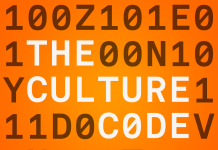
Josh Bersin wrote in the Harvard Business Review that “the single main driver of business impact is the strength of an organization’s learning culture.” Almost every learning and development professional would agree with this statement. But how do you create a culture of learning?
This challenge is only magnified at smaller companies, where the budget for learning and development tends to be minuscule or non-existent. As is so often the case, limitations bring about the very best ideas.
At Alto Pharmacy, the initiatives to scale culture are uniquely creative, action-oriented, and practical. To learn more about Alto’s approach, I met with the Alto’s Chief People Officer, Shannon Wilson.

Alto is a digital pharmacy that makes it easy for doctors to send their patients' prescriptions directly to them. With 1100 employees, Alto’s noble mission to disrupt the medicine prescription process drives its culture.
Alto Pharmacy Sustains Its Culture with Two Key Initiatives
One thing that great company cultures seem to have in common is that they create highly original rituals that bring culture to life in an authentic way. Wilson shared two great examples:
- Voice of the Employee (VOTE). Employees submit a question, concern, feedback, or recognition, and then it is posted on a board. A member of the leadership, ranging from the frontline to the C-suite, responds. All employees see the question and answer. “This process creates a conduit between the senior leadership and the frontline experience because you've got to keep that visceral connection to what's happening at the frontline,” Wilson said.
- Alto Spotlight. The Spotlight program is designed to bring frontline leaders into consistent communication with the senior leadership team. “We invite team members to a live session with our senior leadership team, our VPs, and higher,” Wilson explained. “We give them a template because we know that could be nerve-wracking. They can tell us a little bit about themselves, their Alto journey, their superpowers, and things they are working on.” The frontline leaders give feedback about what's going well, what's just okay, and what needs work. They also have the opportunity to ask questions and ask for advice.
Alto Develops Leaders by “Teaching at Scale”
When rolling out leadership development at a fast-growing company at approximately the 1,000-employee mark, there are two major stumbling blocks:
- Not establishing leadership development before you expand;
- Putting leadership development in place that doesn’t push the needle and is labeled as a cost center in the process.
Wilson’s approach is a master class in what steps a smaller, fast-growing company should take. Wilson said, “Whether you're a startup or not, nothing beats those on-the-job, learn-by-doing opportunities to cultivate both acumen and judgment. That is especially the case if you have a great leader giving you the support that you need, which can accelerate the learning curve.” Wilson was quick to note that formalized training is much more difficult in a smaller environment because it is “an expensive luxury with a limited return on investment (ROI), especially if you don't have things like nudges and digital interventions to reinforce your classroom training.” At Alto, Wilson and her team conduct some formal training, but they focus mainly on follow-up interventions to ensure that learning carries beyond the training room walls and into the day-to-day operations.
Integral to her small budget yet large emphasis approach to leadership development is what Wilson refers to as “teaching at scale.” Here’s how it works: Wilson and her team examine the company-wide operational cadence and processes to identify learning opportunities. “For example,” Wilson offered, “when I was leading a tech team, we learned so much by evaluating the cause of error. We conducted a whole review that delves into what happened five ways and then fully documents the incident to run the entire engineering team through it.”
The concept of teaching at scale brings important learning experiences to life for as many people as possible. “You don't need a classroom. You can take real-life moments and let others learn and give feedback, for example, what did you think about this and why did you do that? That's where the real learning happens, especially for the frontline because they're faced with so many different challenges.” Wilson emphasized how these learning moments are especially valuable in an environment where you have a bias for speed. “Sometimes the business can evolve at a faster rate than you can create and deploy content, so those teachable moments are gold,” she said. “
Wilson’s Book Recommendation for HR Professionals: Surely You’re Joking, Mr. Feynman!
All of the chief people officers I have interviewed are voracious readers and learners. Asked what book she would recommend for human resources (HR) professionals to read, Wilson recommended Surely You're Joking, Mr. Feynman! – Adventures of a Curious Character by Richard Feynman. “He's a Nobel Prize-winning physicist,” Wilson said, “and one of the things he's most remembered for is the freshman seminar. Fe says if you're going to understand something deeply, then you have to be able to convey it in plain language to a smart novice. If you can't teach a freshman seminar on the topic, then you don't really understand what you're talking about.”


